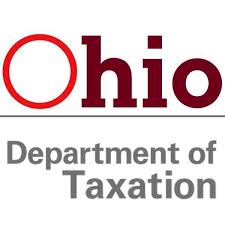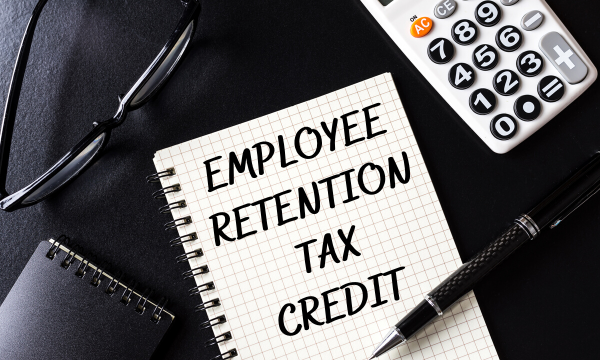IRS Offers Guidance On Employee Retention Credit
 On March 1, 2021, the Internal Revenue Service issued Notice 2021-20 in order to provide further guidance on the Employee Retention Credit.
On March 1, 2021, the Internal Revenue Service issued Notice 2021-20 in order to provide further guidance on the Employee Retention Credit.
A summary of the new guidance is as follows:
- An employer that operates a business is considered to have a partial suspension of business operations if, based on the facts and circumstances, more than a nominal portion of its business operations are suspended by a government order. Notice 2021-20 states that an employer’s business operations will be deemed to constitute more than a nominal portion of its business operations if one of the following two tests are met:
- The first test is met if the gross receipts from the portion of the business operations suspended by a government order is not less than 10 percent of the total gross receipts. Determine this by looking at the gross receipts of the same calendar quarter in 2019.
- The second test is met if the hours of service performed by employees in the portion of the business suspended by a government order is not less than 10 percent of the total number of hours of service performed by all employees in the employer’s business. Determine this by looking at the number of hours of service performed by employees in the same calendar quarter in 2019.
- Notice 2021-20 lists factors that should be taken into account in determining whether a modification required by a government order has more than a nominal effect on business operations. The mere fact that the employer must modify business operations due to a government order does not result in a partial suspension unless the modification has a more than nominal effect on the business operations. The factors to consider include, but are not limited to:
- Limiting occupancy to provide for social distancing. Please note that Notice 2021-20 also states that sufficient physical space to accommodate customers, regardless of the restriction, will likely NOT result in a more than nominal effect on the business operations.
- Requiring services to be performed only on an appointment basis for businesses that previously offered walk-in service
- Changing the format of the service
- Reduced operating hours
- A government order that reduces the employer’s ability to provide goods and services in the normal course of business of not less than 10% of the employer’s business operations is deemed to have more than a nominal effect on business operations
- Modifications altering customer behavior, such as mask requirements or one way aisles, do NOT result in a more than nominal effect on business operations
- The wages an employer uses for PPP forgiveness are excluded from qualifying for the Employee Retention Credit. Examples are as follows:
- Employer A received a PPP loan of $100K and reported $100K of payroll costs on the PPP forgiveness application. The $100K of payroll costs are not eligible for the Employee Retention Credit.
- Employer B received a PPP loan of $200K and reported $250K of payroll costs on the PPP forgiveness application. $200K of the payroll costs are not eligible for the Employee Retention Credit, but $50K of the payroll costs are eligible for the Employee Retention Credit.
- Employer C received a PPP loan of $200K and reported $200K of payroll costs and $70K of other eligible expenses on the PPP forgiveness application. $130K of the payroll costs are not eligible for the Employee Retention Credit, but $70K of the payroll costs are eligible for the Employee Retention Credit.
- Employer D received a PPP loan of $200K and reported $200K of payroll costs and $90K of other eligible expenses on the PPP forgiveness application. $120K (60% x $200K) of the payroll costs are not eligible for the Employee Retention Credit, but $80K of the payroll costs are eligible for the Employee Retention Credit. This is because at least 60% of the PPP forgiveness must be for payroll costs.
- Claiming the Employee Retention Credit for 2020
- An employer eligible for the Employee Retention Credit for 2020 can claim the refund retroactively by filing Form 941-X for the relevant calendar quarters in which the employer paid qualified wages during 2020
- Tax Impact of the Employee Retention Credit
- The Employee Retention Credit reduces the wage expense that an eligible employer could otherwise deduct on its federal income tax return. This works similar to the Work Opportunity Tax Credit.
- Third-Party Payers
- A common law employer who uses a third-party to report and pay employment taxes is entitled to the Employee Retention Credit
- The third-party payer is not entitled to the Employee Retention Credit with respect to the wages it remits on the common law employer’s behalf
- Documentation
- An eligible employer needs to create and maintain records that support their eligibility for the Employee Retention Credit and maintain these records for at least four years. The following documentation should be kept:
- Documentation showing how the employer determined they were eligible for the credit
- Any government orders that suspended business operations
- Any records relied upon to determine whether more than a nominal portion of business operations were suspended due to a government order or whether the government order had more than a nominal effect on business operations
- Any records showing a significant decline in gross receipts
- Payroll records supporting qualified wages
- Documentation showing qualified health plan expenses
- Documentation related to whether the employer is a member of an aggregated group
- Copies of federal employment tax returns
- An eligible employer needs to create and maintain records that support their eligibility for the Employee Retention Credit and maintain these records for at least four years. The following documentation should be kept:
Source: Internal Revenue Service Notice 2021-20



 The Biden Administration announced this week that it will institute a two-week period starting Wednesday, 2/24 during which only businesses with fewer than 20 employees will be able to apply for Paycheck Protection Program (PPP) loans.
The Biden Administration announced this week that it will institute a two-week period starting Wednesday, 2/24 during which only businesses with fewer than 20 employees will be able to apply for Paycheck Protection Program (PPP) loans.
 Democrats on the House Ways and Means Committee are urging the IRS to again extend tax season beyond April 15 to July 15 to give taxpayers an additional three months to file.
Democrats on the House Ways and Means Committee are urging the IRS to again extend tax season beyond April 15 to July 15 to give taxpayers an additional three months to file. 
 The Department of Taxation (ODT) is warning Ohioans who may be victims of unemployment fraud to report the suspected fraud or potentially face higher taxes.
The Department of Taxation (ODT) is warning Ohioans who may be victims of unemployment fraud to report the suspected fraud or potentially face higher taxes.
 The
The